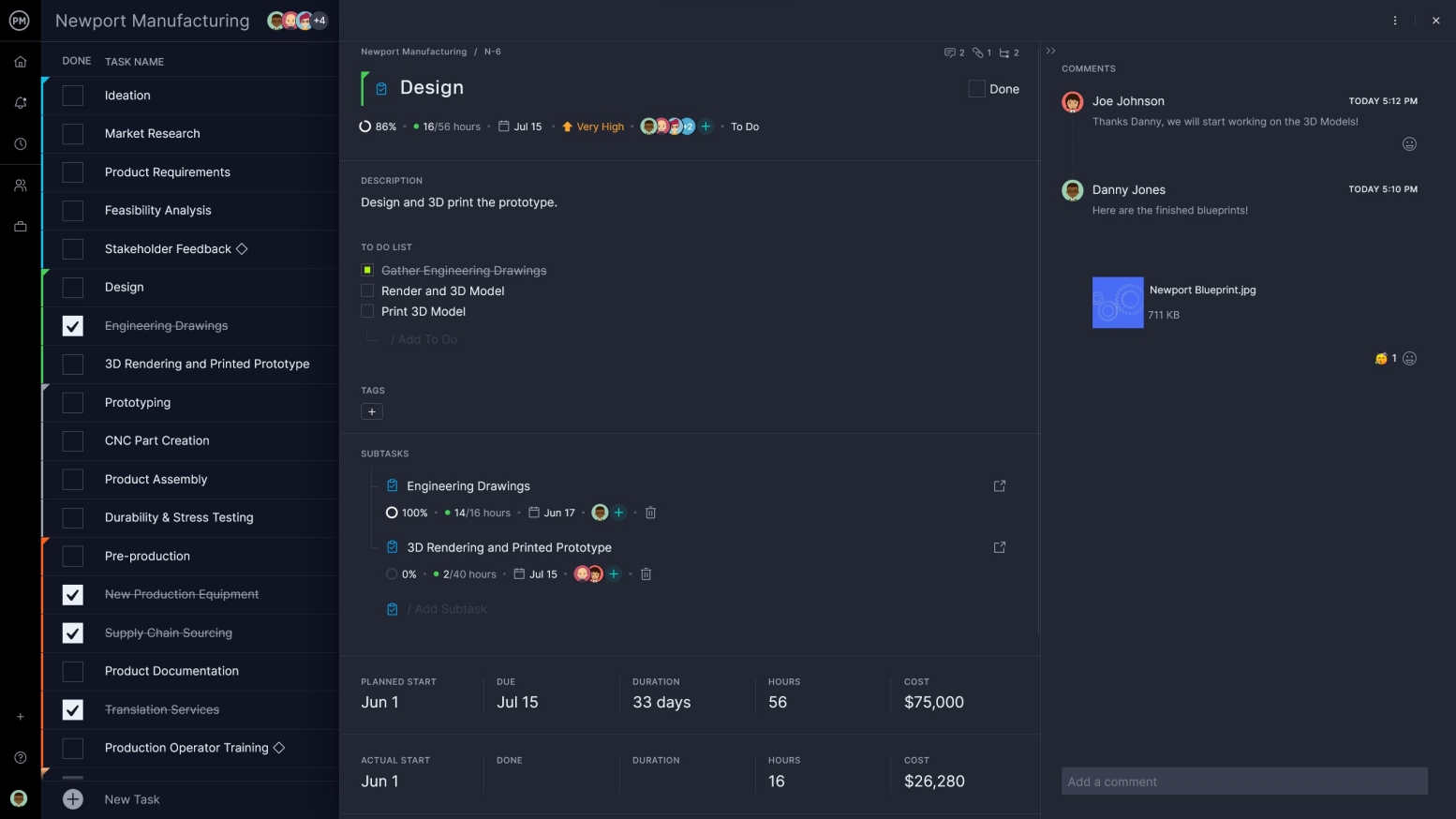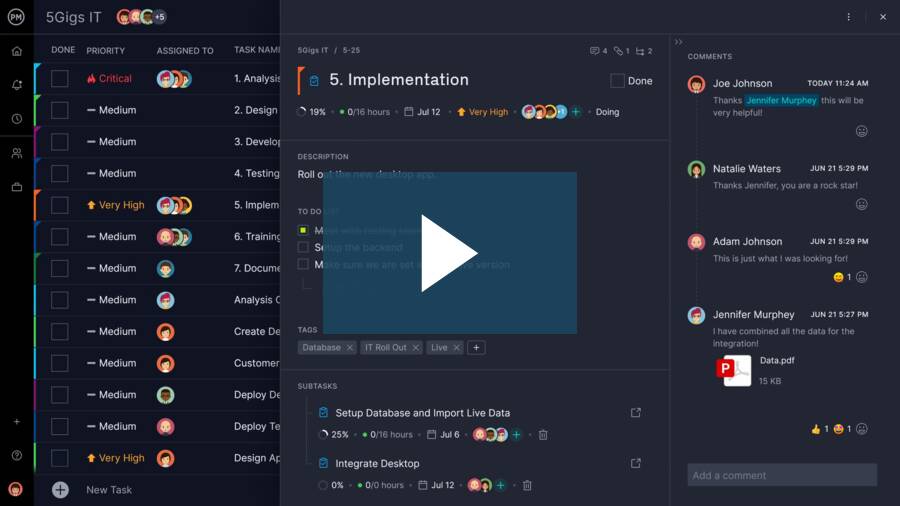- What Is Workplace Productivity?
- How Is Workplace Productivity Measured?
- 5 Strategies to Increase Workplace Productivity
- What Is Productivity Software?
- Offline vs Online Productivity Software
- Must-Have Features of Productivity Software
- How to Measure & Improve Team Productivity
- Is Too Much Process Harming Productivity?
- Improve Your Workplace Productivity with ProjectManager
What Is Workplace Productivity?
Productivity is one of those words you hear so often that it begins to lose its meaning. But productivity isn’t a trend or merely a buzzword—it’s how you measure how efficiently work gets done.
After all, completing your tasks efficiently and working consistently is how you succeed in business.
Therefore, knowing all you can about workplace productivity is key to success. This guide is all about productivity in the workplace, productivity software and team productivity.
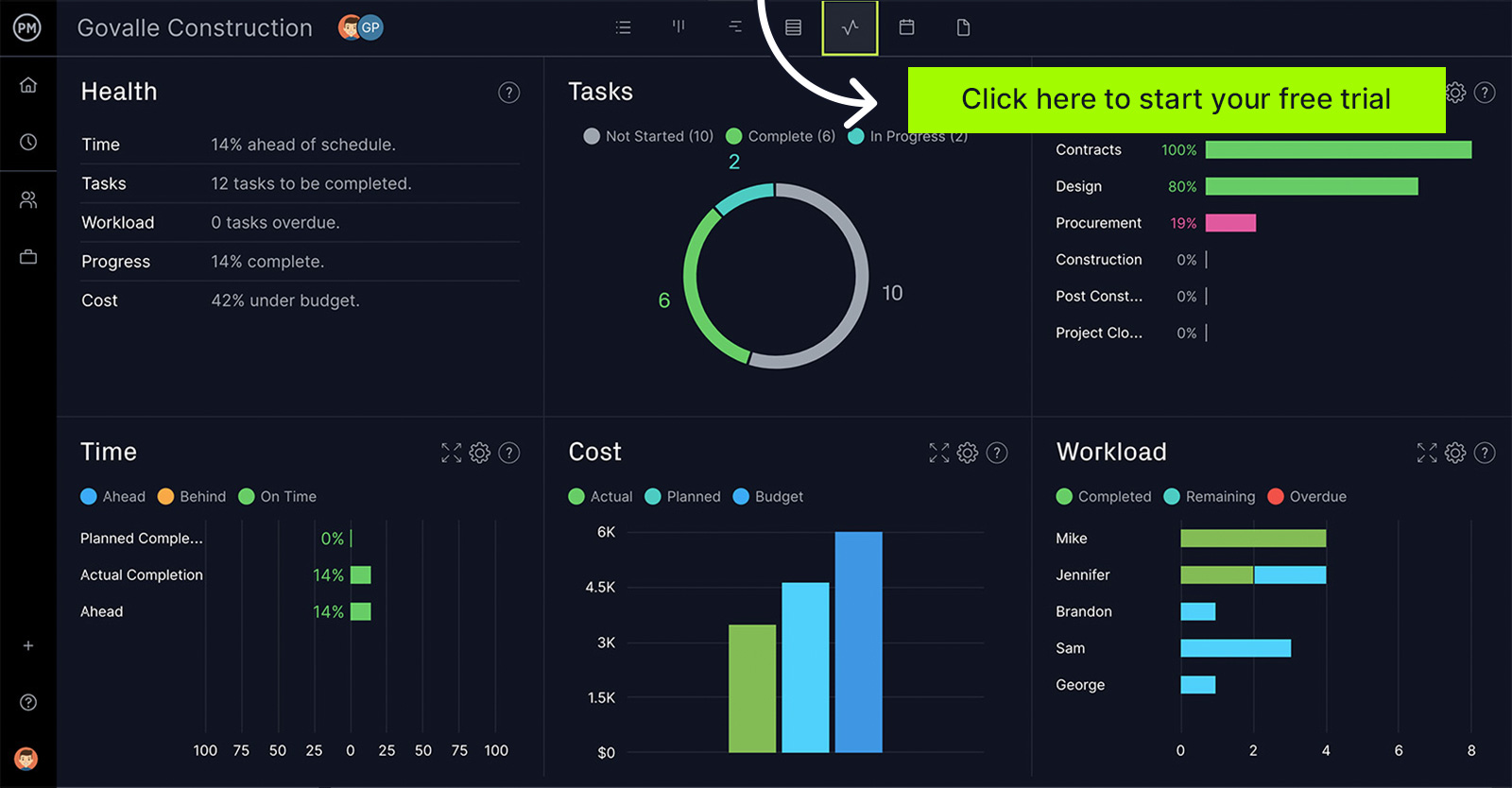
Some of the productivity issues we will be discussing include the following.
- How to increase your productivity in the workplace
- What software solutions can help you work more productively
- How productivity can be stymied
- Ways to increase your team’s productivity
- If too much process stands in the way of productivity
How Is Workplace Productivity Measured?
Workplace productivity is measured by how quickly and efficiently a team can produce goods and services over a certain period of time. It’s a key metric that economists use to measure productivity.
It shouldn’t be confused with employee productivity, which measures the amount of work that an individual can accomplish over an amount of time. Statistically, tracking the efficiency of a larger group is more accurate than measuring a single person.
That doesn’t mean productivity in the workplace is regulated strictly to those who work in an office. It can be applied to those who work from home, and remote workers are likely to find this guide as enlightening as managers.
5 Strategies to Increase Workplace Productivity
Increasing productivity in the workplace improves your chances of completing projects on time and within budget. Your team will thank you for following these five tips:
1. Track Your Tasks
Productivity goes out the window when you’re not paying attention to it. Just focusing on your work isn’t going to cut it. You can lose track of time, get bogged down in minutia or you might complete your tasks on time, but without a process to reign you in when you’re falling behind you’re working blind.
That’s where task tracking comes in. Creating a system of managing your tasks lets you concentrate on your work, while creating the boundaries you need in order not to go off schedule and take the whole project off track.
2. Automation
Of course, you estimate the amount of time each task is going to take when making your project plan, but as you know, the best laid plans often go astray. Automation gives you the heads up you need.
Emails can be automated, for instance, to notify you when a deadline is approaching, pulling you out of the work long enough to see where you are. Now you can adjust accordingly, and get that work done without dragging the project off-track.
3. Take Breaks
It’s important to limit the time you take on each task, but it’s equally crucial for you to give yourself a break. When you lack the backing of a project management office, self-management is crucial.
What about deadlines, schedules? They’re important, but if you’re pushing yourself too hard, you’re going to hit a wall and then you’re stuck. It’s good to take short breaks, especially when working through long tasks, to your brain and body a chance to rest. This way, you return to the work refreshed and more productive.
4. Remove Distractions
Computers and the internet are great, but technology can also serve as a huge distraction.
One of the first things you can do to get a handle of your personal time management is turning off notifications. Not the ones that relate to the timelines of your tasks, but the constant ping of your computer and phone. The moment you’re notified of a new email, social post or even an old-fashioned phone call, is the moment you’re pulled out of your work.
Other distractions can be physical, like your workspace. Is it cluttered, clean, in the middle of office traffic, isolated? What kind of setting do you work best in? There’s no hard and fast rule here, some people need quiet, while others are more productive in busy environments. Figure out what kind of worker you are and then get your workspace to reflect that temperament.
5. Use Technology
Technology is neither good nor bad, it’s how we use it. While it can be a distraction as noted above, it can also help us work better. There are a lot of great tools that are designed to help us improve productivity.
There is software that allows you to create task lists, which are a way to organize and systematically address your work. This gives you one place to view your work. Even better, you can often filter these task lists to customize them by their due date or whatever data column you wish.
Things will change, and those changes are going to impact your task list. That might happen while you’re in the office or not. Task management tools, however, are easy to update, and if they’re cloud-based, then you can do so wherever you are, whatever time of day it is.
What Is Productivity Software?
Productivity software is used to organize your work, collect data that is accessible quickly and facilitate collaboration with your team. It also allows you to monitor and track what you’re doing in order to find areas that can be improved.
These productivity tools are often hiding in plain sight. What is now commonplace software, like word processing and spreadsheet applications, are taken for granted. But when introduced they revolutionized office work, improving speed and accuracy.
Project management tools have changed managing a project for the better, giving teams features to collaborate and work more productively, while managers are able to monitor and track their work. This means they can reallocate resources to meet their team’s capacity and always have them working efficiently.
Offline vs Online Productivity Software
Workplace productivity apps can largely be separated into two distinct types—offline and online productivity software. Which one is right for you?
There are pros and cons for each:
Online Productivity Software
Online productivity software is, well, online. This means you can use the tool anywhere, at any time, which is critical for distributed teams. It also means the data you get when monitoring and tracking is in real-time, which lends itself to greater insights and better decision-making.
There is no installation and less of a learning curve with an online productivity app. You just log on, and it’s there, ready to use. The pricing is also usually more reasonable. Most online productivity apps will have a tiered subscription plan based on the number of users.
Offline Productivity Software
Offline productivity software is not connected to the internet. That means it is not subject to the power of your connection. Since it only lives on your computer, it’s less accessible to unwanted third parties, which may make you feel more secure in protecting your data. It can also mean you’re going to pay more for it. Desktop apps tend to be expensive, as they may require installation and a licensing fee for each terminal you use it on.
Must-Have Features of Productivity Software
Once you’re ready to buy an online productivity app, take the time to look over what it offers. If it has these essential features, you’re already ahead of the game.
Make Timelines to Organize Tasks
Use an interactive Gantt chart to get started on the right foot when planning your project schedule. Create a visual timeline where all your tasks are shown chronologically. Often, you can even link dependent tasks and set milestones to better manage your work.
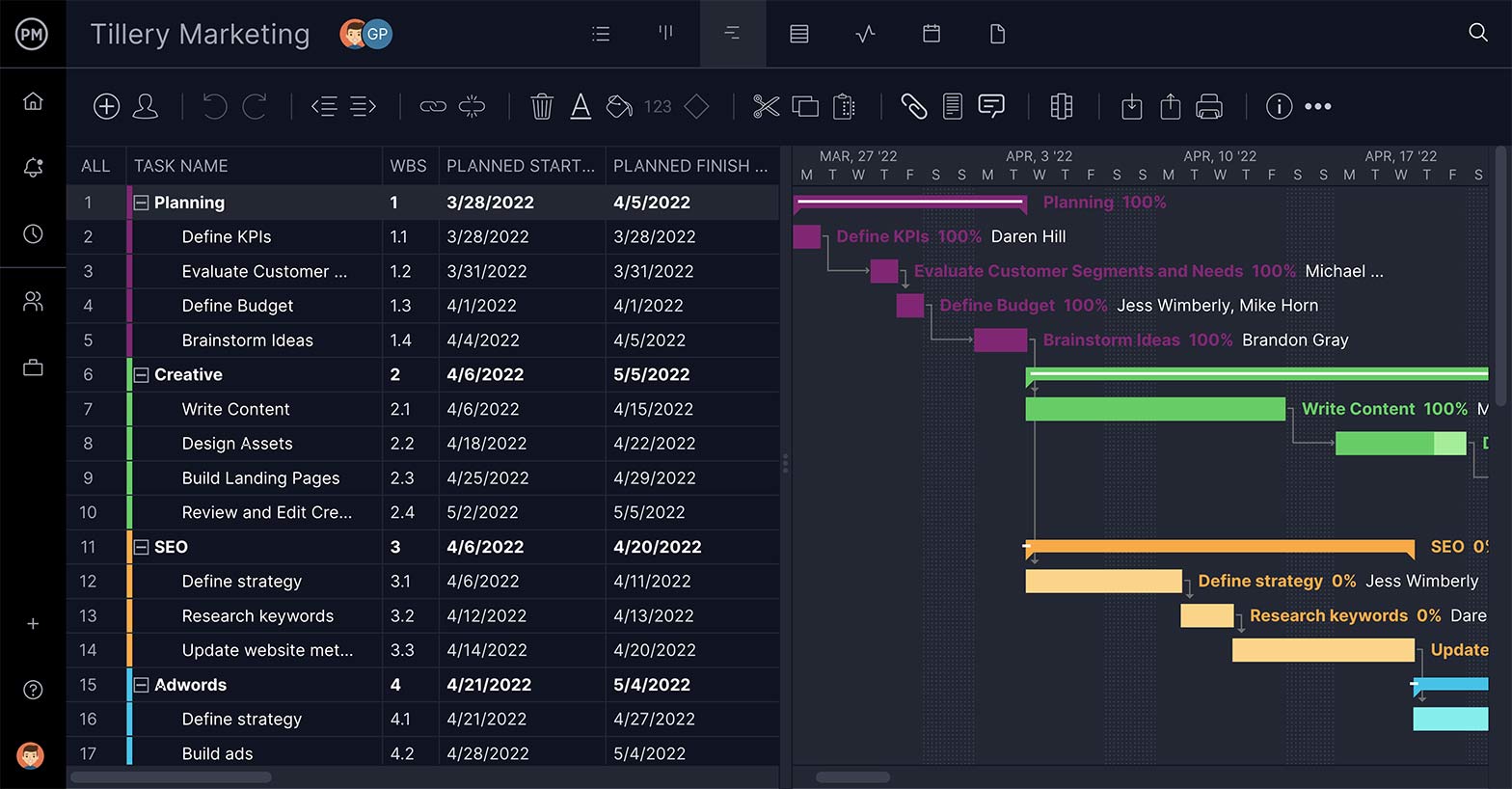
Assign Tasks and Track Progress
Keep track of the time you and your team spend on their tasks and better manage your work. Use collaborative tools to stay in touch with teammates and boost productivity. Personal task lists let you organize work and kanban boards let you manage backlogs and plan sprints.
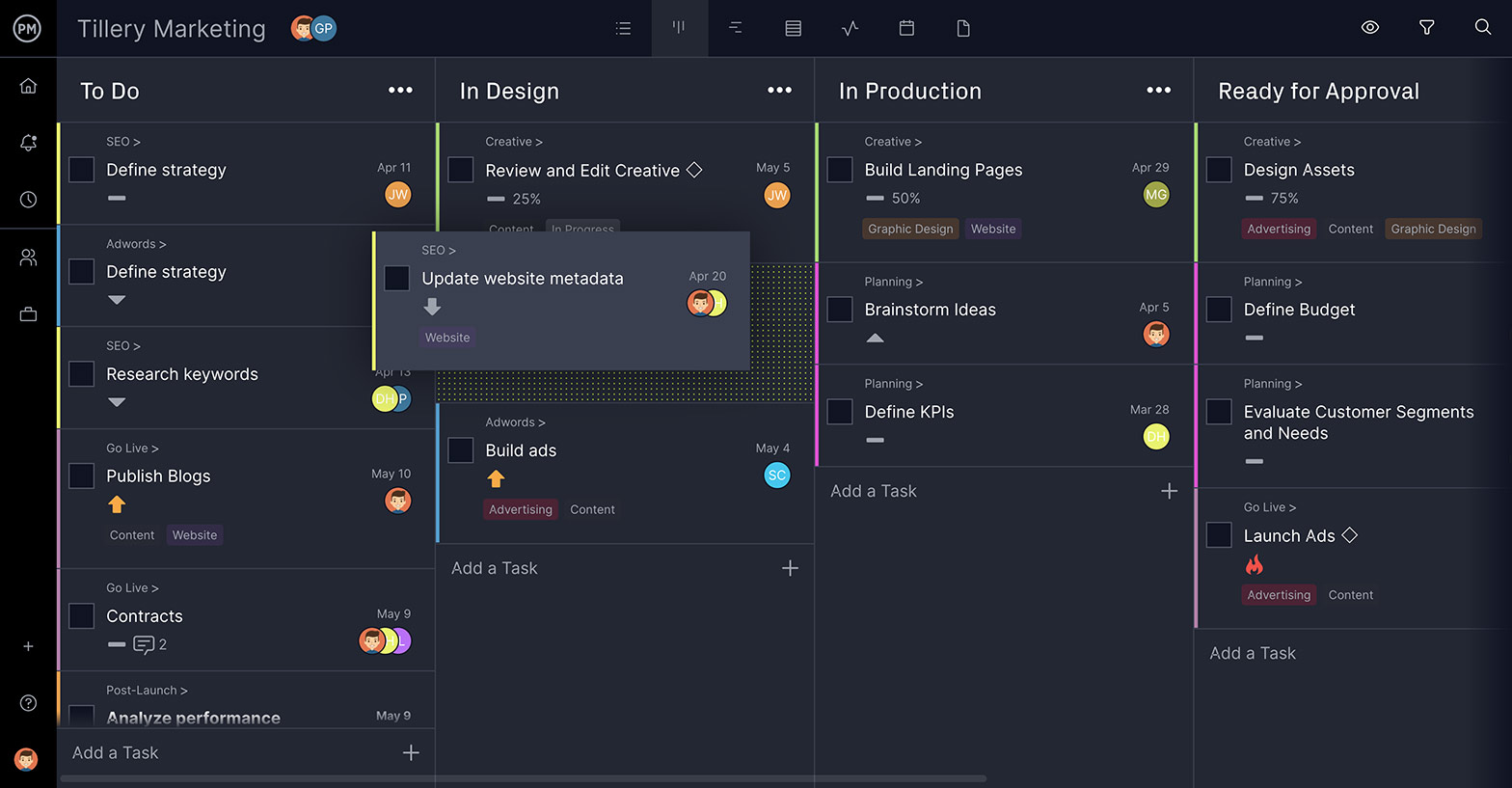
Stay Up-to-date on Tasks
Always know when a deadline is on the horizon. Get alerts when team members comment on a task you’re working on, or that task was updated in any way, with automated email notifications. Look out for in-app alerts (so you don’t need to leave the tool) for greater efficiency.
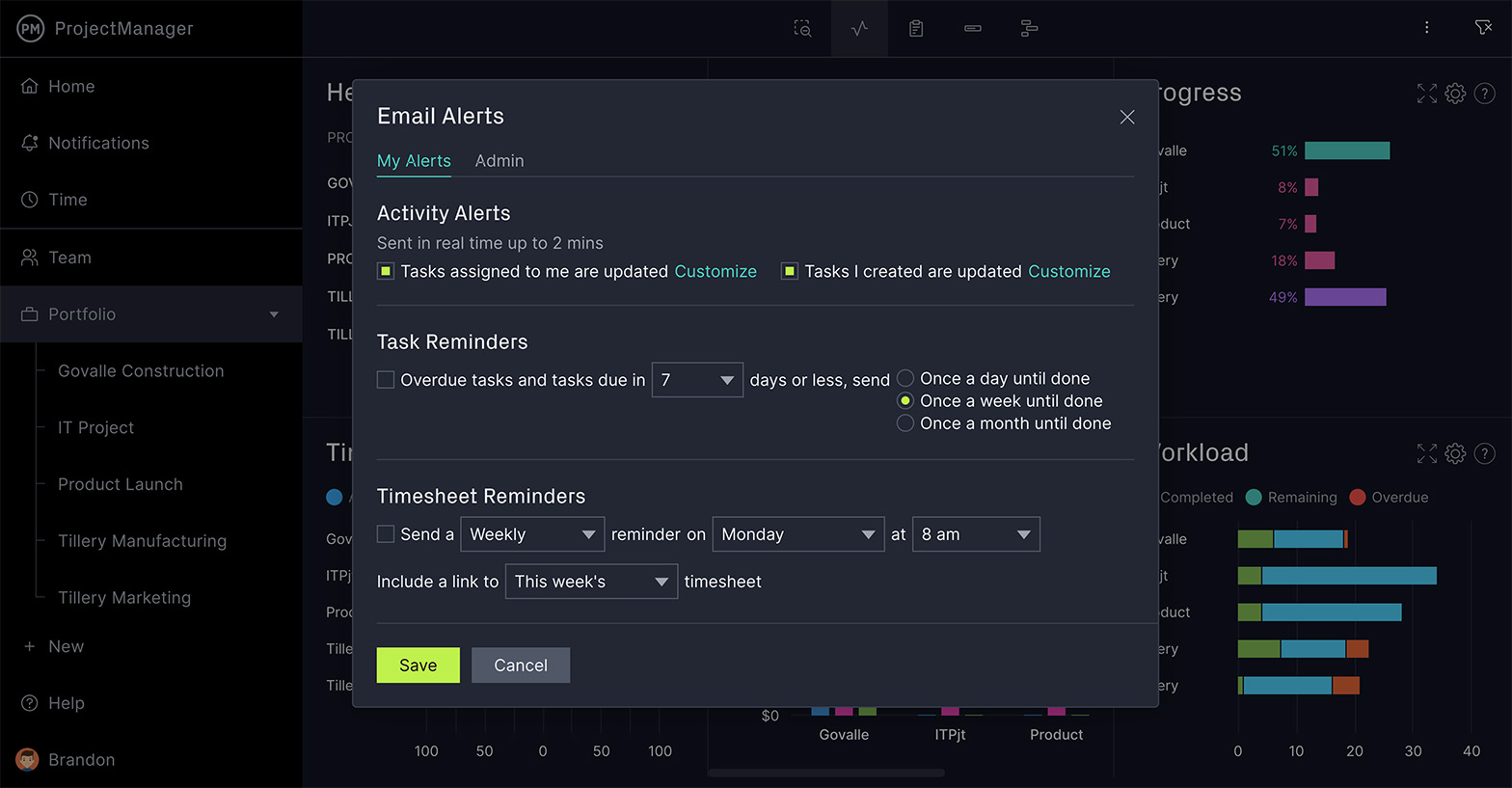
Monitor Progress in Real-Time
Track work and get data on various project metrics with a real-time dashboard. The high-view of the project gives you valuable information on such things as progress, workload, costs and more. Look for a dashboard that does this automatically without having you manually input data.

Track Time Teams Spend on Tasks
Automate your timesheets to populate last week’s tasks and auto-fill as you log hours on your tasks. Get reports to track time, improve your team’s efficiency and control your labor costs to make better time estimates. Timesheets can lock after approval for security.
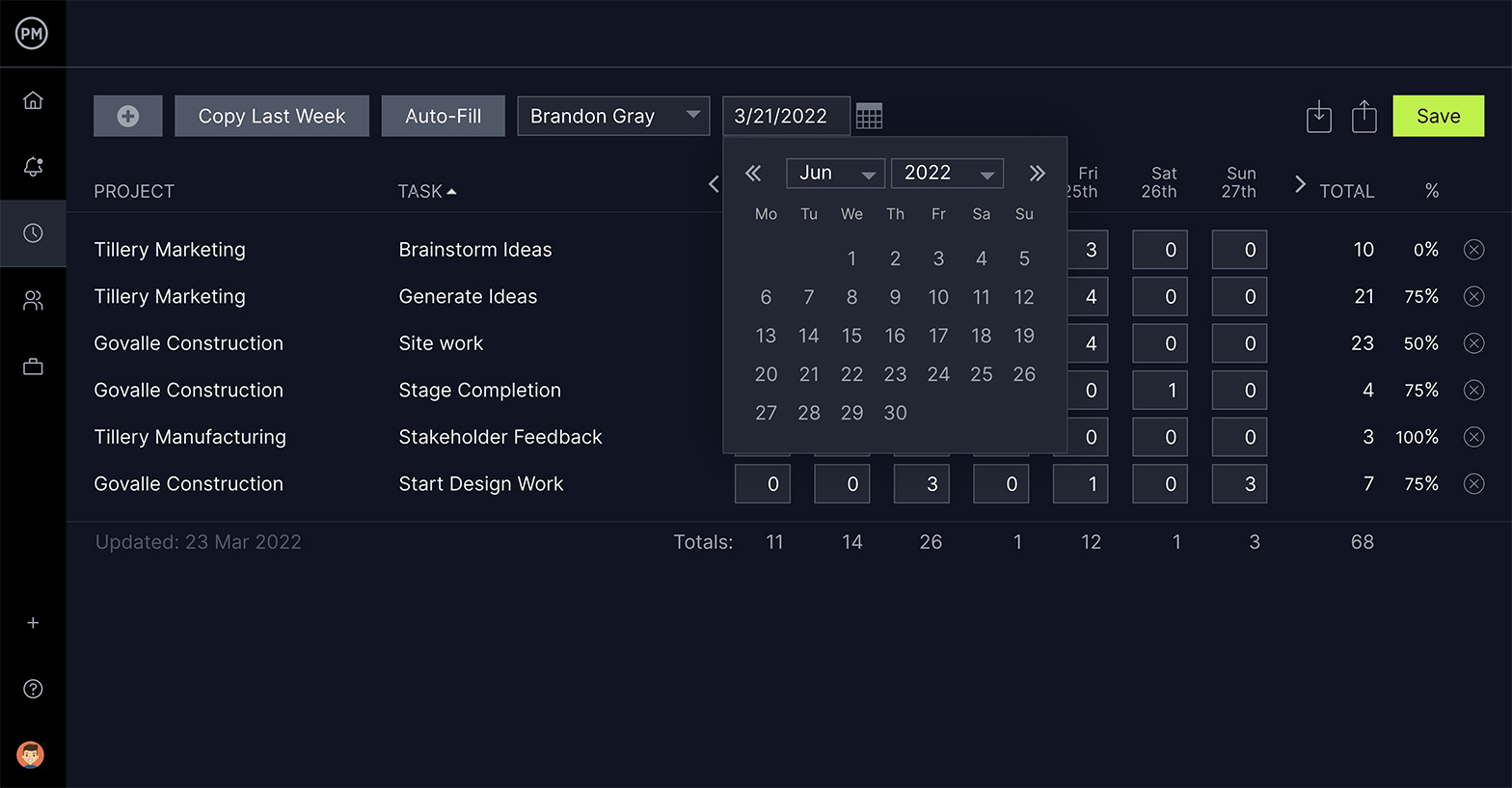
Have a Place For Your Work
See only your tasks and pertinent information to manage your work better. Look for a software tool that allows you to create personal tasks. Get visibility into all of your project assignments to see when they’re due and more.

How to Measure & Improve Team Productivity
The benefits of knowing how productive your team is are immense. Armed with that knowledge, you can plan your upcoming work and keep everyone allocated to their capacity without overloading them. More importantly, you can cut out all the waste.
Anecdotally, your team will tell you that a poor process costs them productivity, and that being hampered by unnecessary bureaucracy slows them down. Understanding their productivity will help you get past that and build processes that work well.
But where do you start? With data, of course!
Assess the Processes You Have
The processes you expect people to use every day are the ones that will either help them be productive or hinder their work. Take the time to audit them and see what you’re working with.
Make a list. Ask your team for the processes they use repeatedly. Check your company policies and manuals, and assess your project management methodology to identify the processes that are frequently used across the business.
Do A Task Assessment
Find out what tasks your team is working on and measure their performance against them. You can do this with resource management tools and time tracking. Once you’ve got enough data you’ll be able to compare performance across the team.
Ask the Team for Feedback
Finally, just ask the team: “How productive do you think you are?” And then: “How do you know?”
It’s interesting to find out how they measure their own productivity: is it in the amount of emails they send or the results they get on their projects?
With the data from your process audit, your task assessments and your feedback from the team you can try to measure the amount of time each process takes.
Minimize Process for Better Productivity
Having carried out your process reviews you should be in a position to evaluate whether those processes are as good as they could be. Look for these things.
- Duplication of effort between teams
- Unnecessary process steps
- Data capture or input that then doesn’t go anywhere
- Mapping out your processes with a network diagram or any visual aid, if you haven’t already, will help you see these bureaucratic time-wasting steps more easily.
You should find it relatively straightforward to identify and ditch process steps that don’t add any value or that duplicate effort. Review all the data captured in the process and make sure that something happens to it. If no one wants the data or uses it for anything, then stop recording it and save that time.
Is Too Much Process Harming Productivity?
Management gurus will tell you that the bureaucracy around process is an area ripe to be reviewed if you want to boost productivity. Too much process can stop your team from achieving their full potential. The more time they spend filling in change requests or logging work orders, the less time they spend actually doing their job.
There is some truth in this. And you wouldn’t be the first manager to worry about whether you’ve got the right level of process right in the team.
However, let’s be measured about it. As innovation expert Julian Birkinshaw writes in HBR.com: “We will never banish bureaucracy, in part because there are some good reasons for it to exist. But we should always seek ways of keeping its worst tendencies in check, by homing in on the specific problems it creates.”
Without the backing of a project management office, it can be hard to create a sea change in your office politics. If you are concerned about whether your processes are helping or hindering your team’s productivity, know that there are ways to change the current paradigm and influence others to do the same.
But first you need the data.
Do a Process Audit
The word audit need not send anyone running for the hills. While it does sound like yet another process to tackle, it really isn’t. You need a simple review in order to know whether your processes are, in fact, getting in the way of productivity. After all, you shouldn’t strip away processes based on assumptions.
You aren’t looking for the number of processes or tools, or even a judgement call on the level of bureaucracy in the team. You can have dozens or hundreds of processes and if they all work smoothly, they can help productivity rather than hinder it.
What you are looking for are the following.
- A drop in productivity
- Signs and symptoms of an unhappy team.
Both these are indicators that bureaucracy is getting in the way of getting things done.
Before you can notice a productivity problem, however, you need to understand the trends in productivity within your own project or organization. Unfortunately, unless you’ve just introduced a horrendous brand new process, you won’t find one, single thing that is slowing your team down. You’re looking for indicators of a gradual decline relative to past measures of productivity.
In order to know if productivity is declining, you need to know how to measure it. Gather all the project data that you have and look for the repeating tasks, as these are often the ones that require processes — such as these.
- Managing requests for changes
- Project handovers and internal reviews
- Meetings
- Processing payments
Task management systems that allow users to input the amount of actual time spent on a task will let you build up a huge repository of useful benchmark data. If you see that last year the change control process took a week for the change to be logged, assessed and either approved or rejected, you can compare that to current data. If it takes a lot longer today, you have empirical evidence that shows your process is slower and that could be part of the reason for the drop in productivity.
Do a Morale Audit
Don’t underestimate the useful information you can get from your team. Talk to them. They will be able to give you a gut feel for whether they are hampered or guided by the processes and (more importantly) which ones are difficult to work with.
Pinpoint the processes that are causing the most grief. Analyze what about them is creating problems, which could be one or more of the following.
- They are too time consuming
- The approval loop goes to the wrong people
- They require too much information
- Nothing is done with the information that is provided.
It can take time to recover from the drop in morale that is the byproduct of an unproductive work environment, and bringing to mind all that is frustrating your team does need to be done sensitively. Be mindful in this process, and be prepared to address immediate concerns. Deal with any quick wins first, such as explaining where the data goes and why the process works that way. Then deal with the practical issues raised by attempting to resolve the process issues they have flagged.
These are quick ways to assess whether your team is less productive as a result of process. You can carry out large scale process mapping and do a deep dive into your productivity, but it’s easier to start with identifying some quick wins before moving to that sort of time-consuming initiative.
A drop in productivity could be the cause of a morale problem, or a symptom of poor morale in the team. As you can imagine, these two issues are closely linked, so it’s worth seeing what you can do to address low morale at the same time.
Ultimately, information sharing and involving the team in the assessment can go a long way to improving morale.
How to Get Rid of Ineffective Processes
So, you’ve analyzed your productivity data and reviewed the team morale situation, and you’ve learned that the issues are definitely related to ineffective processes. Here are three steps you can take to weed out what’s not working.
1. Take a leaf out of the Lean and Six Sigma manuals by stripping everything out of the process that doesn’t add value. Your team can tell you what they are. They know and work with the processes regularly, and they will have a good idea about which ones are essential.
2. Try to avoid falling into the trap of removing too many processes without validating them, however. Someone else in the organization might need the piece of data that you have decided isn’t necessary. Do some sense checking before stripping the process back totally, or you’ll end up being unproductive for the opposite reasons!
3. Delegate the process-related admin tasks to team members to share the load and streamline operations. Remember, democracy is not always the best approach in delegation. Choose team members best suited to accomplish them efficiently. There’s no business benefit in having your highly paid technical architect do low-value process paperwork if your team administrator could do it just as well.
4. Advocate for your team. Many of your processes will be organization-wide, and you probably can’t remove them without some serious negotiation. Bring key leaders together and arm yourself with the data you uncovered in your audit to demonstrate the loss in productivity and its impact on the bottom line. Be sure to demonstrate your clear solution-oriented approach that would work just as well, yet is less process-heavy and more productive.
New Benchmark: The Goldilocks Zone
What you want are processes that support your team and help them be more productive. In other words, processes that are not too big, not too small, but are, as Goldilocks would exclaim: “Just right!”
It will take a bit of trial and error to whittle away the old, outmoded processes and streamline new ones. Use a continuous feedback approach with your team to maintain the Goldilocks Zone of Processes and prevent new ones from creeping in.
In fact, getting team buy-in on all processes helps improve team morale because it boosts engagement when they know they are instrumental to contributing to continuous process improvement. Collaboration will really make a difference; overall you should quickly see productivity improvements, and you can tweak your processes until they are just right for the whole team.
Improve Your Workplace Productivity with ProjectManager
Use your online collaboration project tools to keep your project and process work streamlined alongside each other. With ProjectManager, you can keep all your internal and project documents stored alongside your project plans, and you can keep your team looped into project communications with our unparalleled collaboration platform. Start your free trial today.
Start your free 30-day trial
Deliver faster, collaborate better, innovate more effectively — without the high prices and months-long implementation and extensive training required by other products.
Start free trial